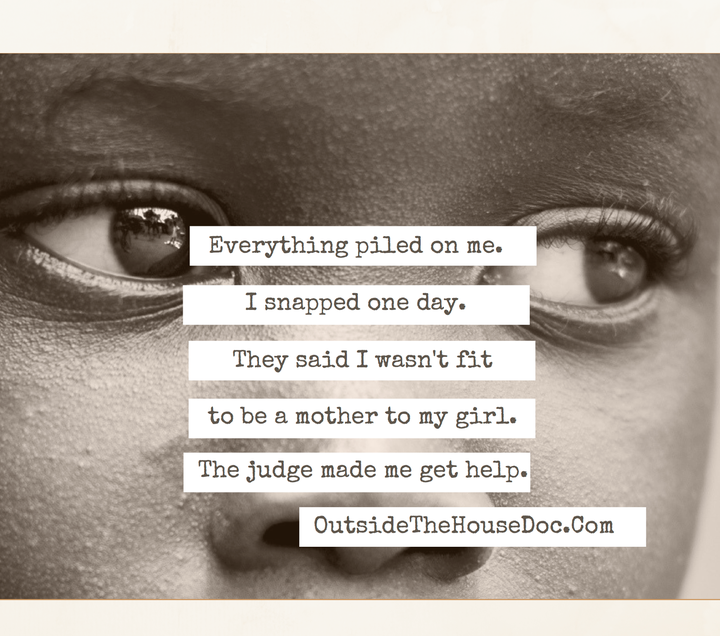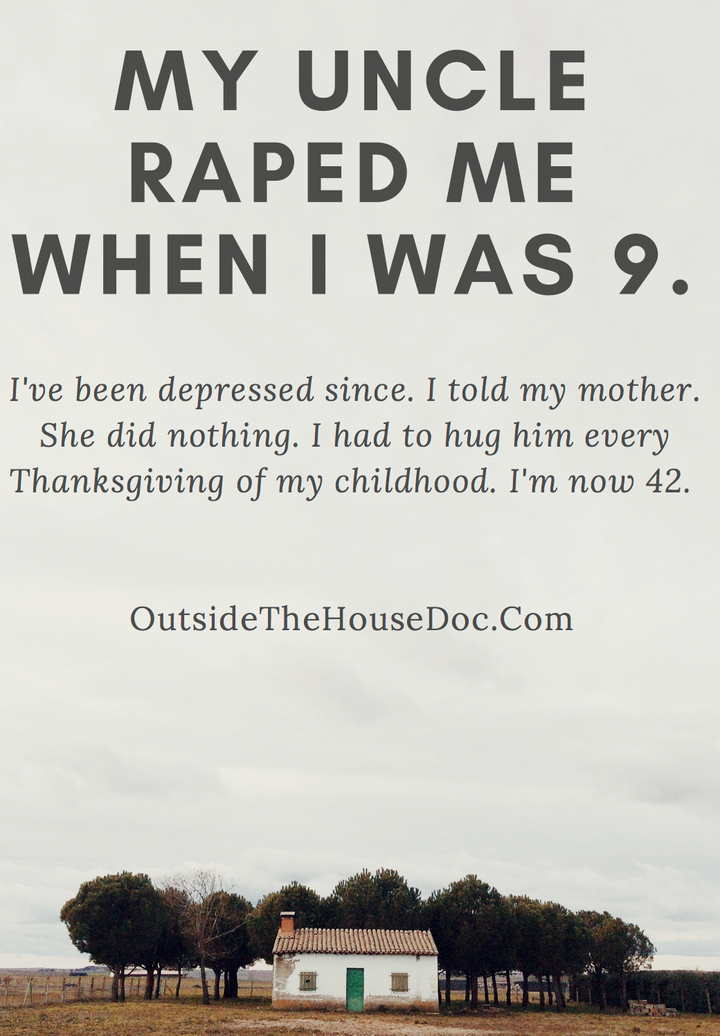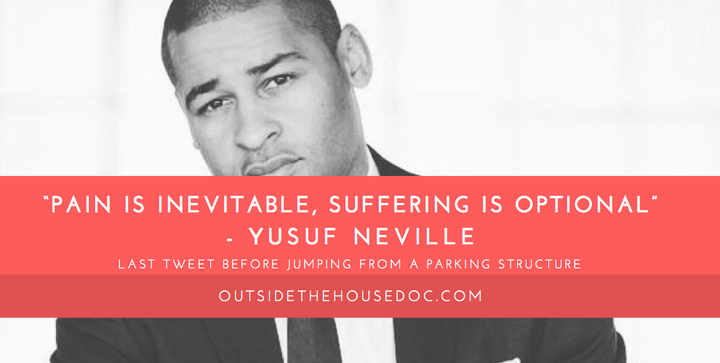Vulnerability can be difficult when you’ve spent days hiding beneath blankets, avoiding calls, ensuring no light can make it through your blackout curtains, dealing with depression. It was difficult to share with anyone what I’d been dealing with, but somewhere, in a friend, I placed my struggles. I was depressed, and as if that weren’t enough, I was also dealing with anxiety. While it’s now not a secret due to my frequent “why I left my good job” stories, I haven’t talked much about why it took me so long to open up.

Outside the House, the documentary about Black mental illness by Director, Darnell Lamont Walker, brought me back to that house in which I was first told, and asked me to burn that house to the ground. Released on January 4th, 2017, this is already one of the most important films I’m sure I will ever watch, based on content alone. Not only is Darnell Lamont Walker opening the door to well-hidden truths, but he is giving a safe space to those who need it to begin a once seemingly impossible conversation.
We don’t talk about these issues outside of these four walls
Depression has this inexplicable way of making us feel alone, like the darkness surrounding us is unprecedented. “No one will understand any of this,” I’d tell myself repeatedly. This thought, this mantra, affected my sharing and ultimately my healing. In Outside the House, I saw pieces of my own struggle and my own pain and survival in each of the courageous individuals sharing their stories. I watched from beginning to end credits with tears in my eyes at the not-so-subtle reminder that I am not alone.

“This film is not about statistics, or science, or theories, or practices,” Walker says. “It’s about mental health and sharing our stories, so others will understand they are not alone. It’s about what’s happened to us and what’s happened to our parents, and what will happen to our children, and breaking cycles that are killing us in dark places.”
True to his word, Darnell Lamont Walker did not make a clinical, stat-filled film. This is raw emotion on screen, owned by people who’ve reached the point in their struggle where they must share to survive. This film is a therapy session, not only for those participating in the making of it but also for those watching. “While stats are important to know,” says Tonja Stidhum, one of the first to view the film, “being able to actually connect with people is what makes this documentary special. This is a safe space in and of itself.”
I’m just existing.
“I’m just existing,” is the line over a black screen that opens the film, and I’m captured until it releases me a little over an hour later. In such a short time, Outside the House tackles depression, anxiety, postpartum depression, molestation, suicide, generational bouts with mental illness, the church’s role in mental health, and so much more.

“Keeping our secrets, our pain and hurt, and our struggles inside the house like our parents and their parents suggested is doing nothing but killing us,” Walker says. “People we love fiercely are killing themselves in loneliness in silent rooms inside that house, and sharing these stories can help them all, or if sharing these stories can begin the conversations, then I am glad.”
Outside the House makes vulnerability a little bit easier. It makes sharing and crying and healing a little bit easier, and for that, I recommend you all see this film.
